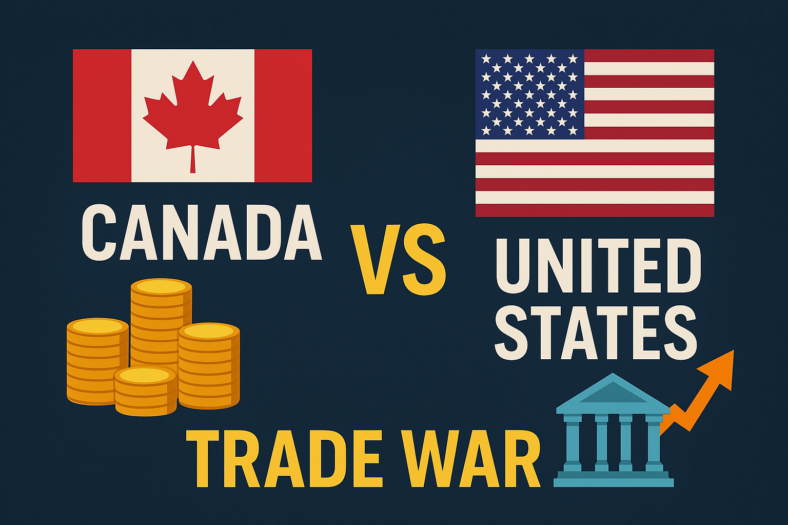Best Balance Transfer credit cards in Canada: Editorial picks
| Compare | Ratestead Rating | Annual Fee | Annual Rewards | Welcome Bonus | Learn More |
|---|
| APPLY NOW | /10 |
Understanding Balance Transfer Credit Cards in Canada
Are you looking to save money on your credit card debt? A balance transfer credit card may be the right choice for you. But what is a balance transfer credit card, and how does it work? In this blog post, we’ll explore the basics of balance transfer credit cards and help you decide if one is the right choice for you.
A balance transfer credit card is a type of credit card that allows you to transfer your existing balances from multiple cards onto one card with a lower interest rate. This can help reduce the amount of interest you are paying on your debt, as well as simplify your payments by consolidating all of your debt into one place.
When applying for a balance transfer credit card in Canada, it’s important to look for one with a low or 0% introductory APR (annual percentage rate). This will give you a window of time during which you can pay off all or part of the outstanding balance without accruing any interest. This introductory period can range from 6 months to 1 year depending on the issuer. After this promotional period ends, the APR will typically increase to between 12-20%.
It’s also important to note that many issuers will charge an upfront fee when transferring balances onto their cards. Make sure to read through all of the terms and conditions before signing up for any new cards so that you know exactly what fees and rates apply. You should also make sure that any balance transfers are completed within 60 days of opening the new account, as some issuers may impose additional fees after this time frame has passed.
Balance transfer credit cards can be an effective way to get out from under high-interest debt and start saving money on what you owe. However, it’s important to research different options carefully and understand all of the associated fees before making any commitments or transfers. With some careful planning and research, a balance transfer credit card could be just what you need to get out from under high-interest debt and start saving money today!
Taking Advantage of Balance Transfer Credit Cards in Canada
A balance transfer credit card can help you save money if you are carrying a high-interest credit card. Balance transfer cards allow you to transfer your existing debt onto another credit card with lower interest rates, so you can pay off your debt faster and for less money. Let’s look at why Canadians should consider using a balance transfer credit card.
The Benefits of Balance Transfer Credit Cards
The main benefit of a balance transfer credit card is that it offers lower interest rates than many other types of credit cards. This means that the amount of interest you need to pay on your outstanding balance will be much lower than it was before. For example, if you had an outstanding balance of $2,000 on a standard credit card with an annual percentage rate (APR) of 20%, the interest payments alone would cost around $400 each year. However, if you transferred that same balance to a balance transfer credit card with an APR of 10%, your annual interest payments would drop to only around $200—a savings of $200 per year!
Another benefit is that some balance transfer credit cards offer introductory periods where there is no interest charged on the transferred balances for a set period of time (usually 6–12 months). This gives borrowers enough time to make substantial progress on their outstanding balances without worrying about accruing additional debt from interest charges. It also helps them build up their financial discipline as they work towards getting out from under their current debts.
In addition, some banks offer promotional rewards when transferring your existing balances over to their cards. These rewards can range from cash back bonuses to air miles points or even free travel insurance. Rewards like these can be very useful for those looking to boost their financial health while also enjoying the benefits associated with having a good credit score.
Balance transfer credit cards are becoming increasingly popular in Canada as more people become aware of the potential savings they can provide when transferring existing debt over onto them. With lower APRs and often reward programs available, they’re definitely worth considering if you’re looking for ways to save money and reduce your overall debt burden quickly and effectively. Whether it’s saving money on interest payments or earning rewards through promotional offers, using a balance transfer credit card could be just what you need to get back on track financially!
The Benefits of Balance Transfer Credit Cards in Canada
Are you looking for ways to save money on your credit card debt? One solution is to transfer the balance of your existing credit cards to a balance transfer credit card. Balance transfer cards offer a range of benefits, from lower interest rates and fees to a grace period for repayment. Let’s take a closer look at some of the advantages of transferring balances with a balance transfer credit card in Canada.
Lower Interest Rates
One of the biggest advantages of balance transfer cards is the reduced interest rate offered on transferred balances. In many cases, the interest rate can be significantly lower than what you are paying on other credit cards. This can potentially save you hundreds or even thousands of dollars over time as it allows you to pay off your debt more quickly and at lower cost. Additionally, many balance transfer cards also offer 0% introductory APR offers that last for up to 18 months which will allow you even more time to pay off your debt without accruing additional costs.
Flexible Repayment Options
Another benefit of balance transfer cards is their flexible repayment options. Many providers offer different payment plans that allow you to choose how much and when you want to make payments towards your debt. This flexibility makes managing your finances easier by allowing you to customize your payment plan based on what works best for your budget and financial goals. Additionally, many cards also offer a grace period during which no interest will be charged on new purchases made with the card, giving you even more time before having to begin making payments towards the purchase amount.
Increased Credit Limit
A third benefit of balance transfer cards is an increased credit limit compared to other credit cards. When transferring balances from multiple high-limit accounts onto one balance transfer card, not only will you have access to more funds if needed but it can also help improve your credit score by lowering your overall utilization rate (the ratio between total available credit and used credit). This can be beneficial if you are looking at applying for larger loans or lines of credits in the future as having a higher available line of credit may increase chances for approval and better terms such as lower interest rates and fees.
Balance transfers can be an effective way to reduce debt while saving money in the process – provided they are managed responsibly and used correctly within the terms outlined by each provider. If this sounds like something that could work for you, it’s worth researching different providers and offers available in Canada so that you can find one that best suits your needs and financial situation. With careful consideration and research, transferring balances with a balance transfer card could be just what Canadians need to get out from under their financial burdens once and for all!
What to Know About Balance Transfer Credit Cards in Canada
Balance transfer credit cards are a great option for those looking to consolidate their debt or take advantage of an introductory offer, but they come with certain drawbacks as well. Before you apply for a balance transfer credit card, it’s important to understand the potential risks that could come with it. Here is what you need to know about the disadvantages of these cards in Canada.
High-Interest Rates After the Intro Period Ends
When you sign up for a balance transfer credit card, one of the main benefits you can take advantage of is the 0% interest rate on your transfers during the introductory period. However, once this period ends, depending on your credit score and other factors, you will likely be charged a much higher interest rate than what you’re used to—sometimes as high as 21%. This can make it difficult to pay off your debt if you don’t have enough money saved up or extra income coming in.
Annual Fees and Other Charges
Many balance transfer credit cards come with annual fees that can range from $20 to upwards of $100 and beyond—on top of any other fees associated with owning a card like late payment charges, foreign transaction fees, etc. It’s important to do your research before applying for a card so that you understand all of the costs associated with owning it and make sure they’re worth it given the rewards or perks offered by the card issuer.
Maximum Balance Transfer Limit
Most balance transfer credit cards come with maximum balance transfer limits that range from 30-50% of your total available limit. This means that even if you want to transfer more than this amount onto your new card, you won’t be able to do so unless it’s approved by the card issuer (which isn’t always guaranteed). This can be especially restrictive if you owe more money than this limit allows and need help consolidating your debt quickly.
Negative Impact on Your Credit Score
Applying for any kind of credit card usually impacts your overall credit score one way or another—but this is especially true when it comes to balance transfer cards since they require multiple hard inquiries by lenders who are trying to determine whether or not they should approve your application. A decrease in your score could result in higher interest rates on other forms of debt (like mortgages) or could even prevent you from getting approved for future loans altogether.
Balance transfer credit cards can be incredibly beneficial if used correctly and managed responsibly—but there are also some potential drawbacks that should be taken into consideration before applying for one in Canada. Understanding these disadvantages is key if you want to make sure that this type of card is right for you and your financial situation before taking out additional debt. Be sure to do your research and compare different offers before making any decisions!
A Comprehensive Guide to Balance Transfer Credit Cards in Canada
Are you interested in transferring a credit card balance? Balance transfer credit cards are an increasingly popular way to consolidate debt. It’s important, however, that you understand the details before applying for one. This blog post will go over the basics of balance transfer credit cards in Canada, including how they work, their features, and the best options available. Read on to learn more!
What is a Balance Transfer Credit Card?
A balance transfer credit card is a type of Canadian credit card designed specifically for those looking to consolidate debt. It works by offering you an introductory period during which you pay 0% interest on your transferred balance from another financial institution. After this period ends (usually around 12 months), the regular interest rate will apply. A balance transfer credit card can help you reduce your monthly payments and save on interest fees while paying off your debt faster.
Balance Transfer Credit Card Features
When selecting a balance transfer credit card, there are several features to consider. Here are some of the most important ones:
- Length of introductory offer – Most balance transfer cards offer an introductory period of 0% APR for up to 12 months or longer. Make sure to read all the terms and conditions before signing up so that you know when the promotional rate will end and what your new interest rate will be after that point.
- Annual fee – Many balance transfer cards come with no annual fee or even rewards programs such as cash back or travel points. However, some may have an annual fee attached, so make sure to double check before applying.
- Fees – Be aware that some cards might charge additional fees such as late payment fees or foreign transaction fees if you use it outside of Canada
- Balance limit – Pay attention to any limits on how much you can transfer from another financial institution onto your new balance transfer card. Some cards have lower limits than others, so make sure yours allows enough room for all your balances combined if necessary.
- Network – Make sure the card is compatible with major networks such as Visa or Mastercard so that it’s accepted wherever you need it to be used most often (e.g., online shopping).
What is a Balance Transfer?
A balance transfer is when you move the outstanding debt from one credit card to another. Typically, this is done by taking advantage of an offer from a different credit card company that has a lower interest rate than your current credit card or offers an introductory rate with no annual fee and/or rewards points promotion. The goal is usually to pay off the debt faster and often at a much lower cost than if you stayed with your original credit card company.
Are There any Fees Involved?
Yes, there may be fees associated with the process of transferring your balance between cards. It’s important to read all terms and conditions carefully before committing to any type of agreement. Most companies will offer a promotional period during which no fees are charged for balance transfers; however, after that period has ended, you may be subject to fees for future transfers. Additionally, if you miss payments or fail to adhere to other terms set by your new credit card company before transferring your balance, they may also assess extra charges as well as penalty rates on top of the normal APR once the promotional period ends.
How Do I Qualify for a Balance Transfer?
In order to qualify for a balance transfer in Canada, you must have a good payment history and maintain positive relationships with other financial institutions such as banks or loan services that are involved in the process as well as meet certain requirements set forth by your chosen credit card provider. For example, some providers require that applicants have at least two years of employment history and an income level above $25K annually in order to qualify for their services. Certain providers may also require additional information such as proof of residence or copies of recent utility bills before approving applications for balance transfers as well.
FAQs About Balance Transfer Cards
A balance transfer card is a credit card that allows you to transfer the outstanding balance from one or more existing credit cards onto it. These cards often come with an introductory period during which you’ll pay little to no interest on the transferred balance.
To transfer a balance, you typically fill out a form with the details of the debt you want to transfer. Once approved, the balance is moved from your old card(s) to the new one. You may be charged a fee for the transfer, usually a percentage of the transferred amount.
The main benefit is the ability to consolidate debt from multiple cards onto one with a potentially lower interest rate, especially during the introductory period. This can save you money on interest and simplify your finances by having just one monthly payment.
It’s important to consider the length of the introductory period, the interest rate after the introductory period ends, any fees associated with the transfer, and whether you’ll be able to pay off the transferred balance within the promotional period.
Yes, there are often fees for balance transfers, typically around 1-3% of the transferred amount. Additionally, if you don’t pay off the transferred balance within the introductory period, you’ll start accruing interest on that balance.
Balance transfer cards are typically used for credit card debt, but some may allow you to transfer other types of debt, such as personal loans or lines of credit. However, this varies by card issuer, so it’s best to check the terms and conditions.
Yes, opening a new credit card can temporarily lower your credit score, as it results in a hard inquiry on your credit report and reduces the average age of your accounts. However, if you manage the new card responsibly by making on-time payments and keeping your balances low, it can ultimately have a positive impact on your credit score over time.
Yes, you can usually make new purchases on a balance transfer card, but be aware that these purchases may accrue interest at the card’s regular rate if not paid off in full by the due date. Additionally, payments you make will typically go toward paying off the balance with the lowest interest rate first, so it’s wise to focus on paying off any new purchases separately if possible.




















